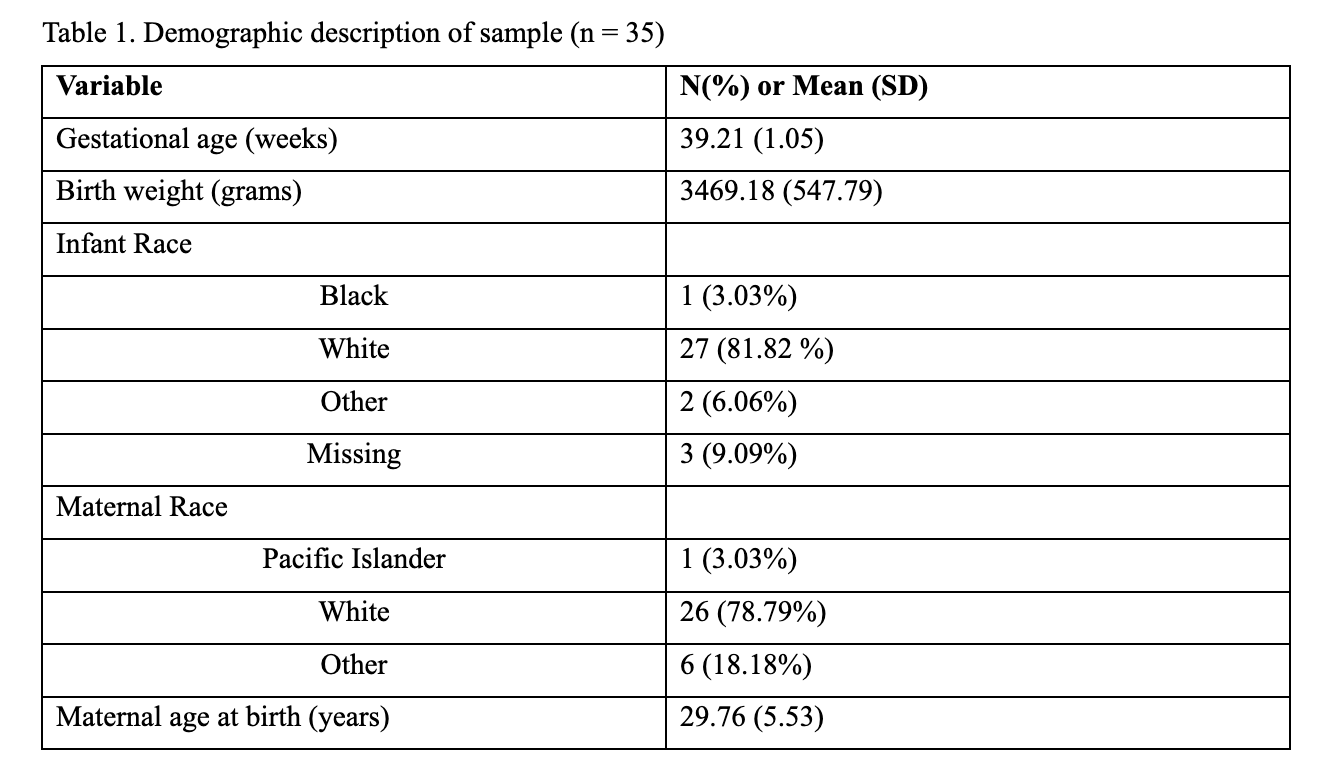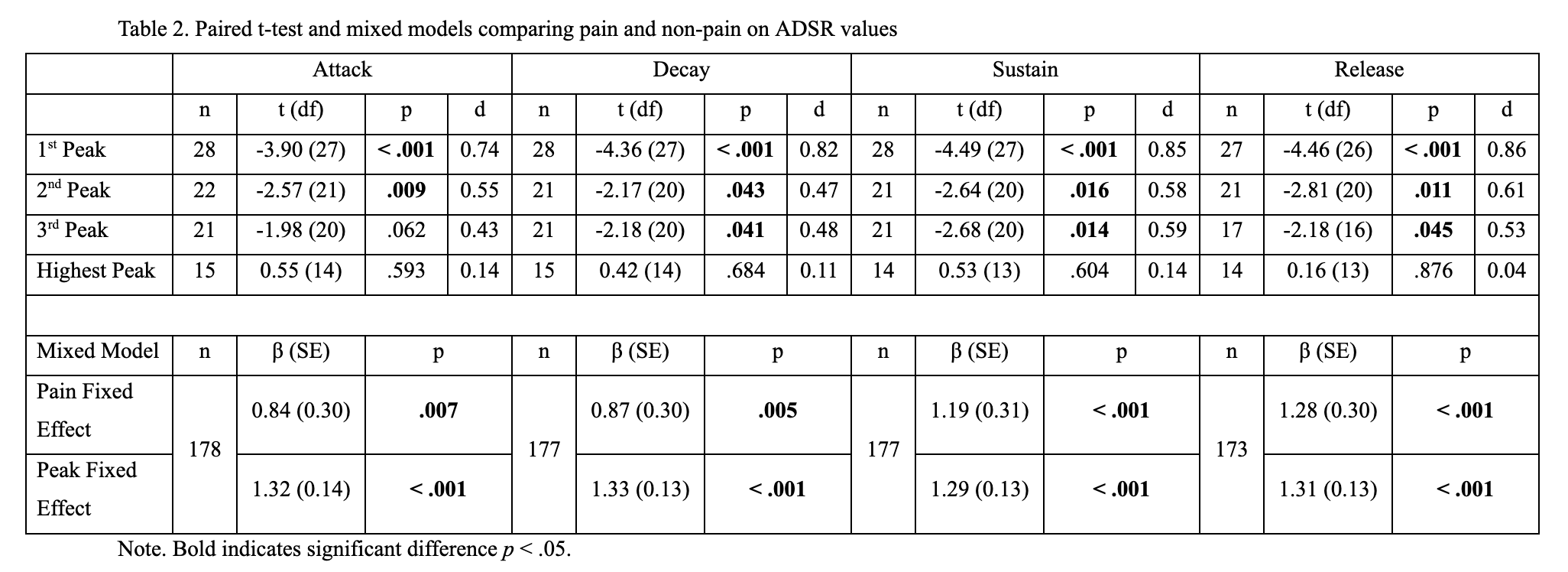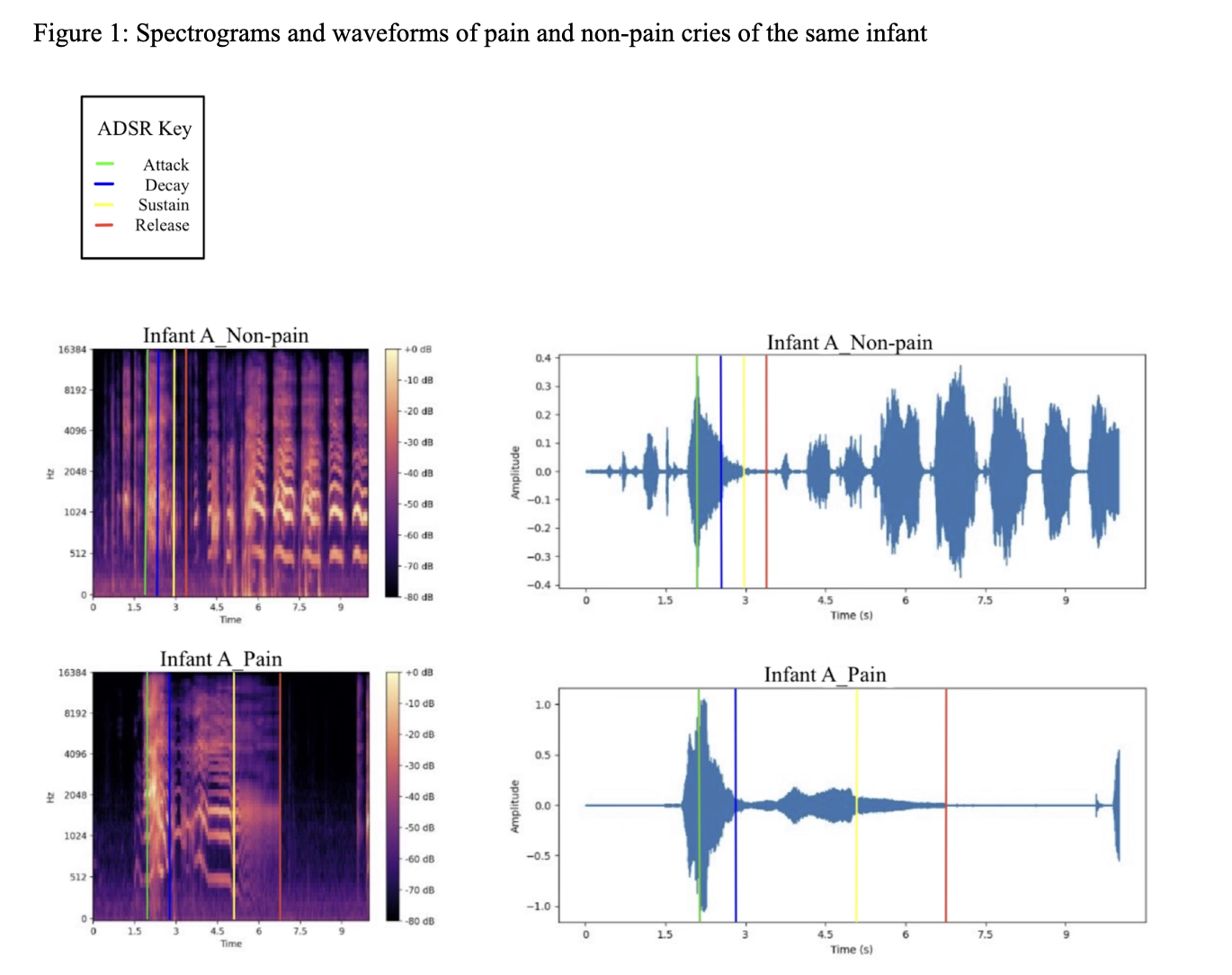Developmental and Behavioral Pediatrics
Session: Developmental and Behavioral Pediatrics 3: Screening
423 - Using Musical Theory for the Analysis of Newborn Pain and Non-pain Cries
Friday, May 3, 2024
5:15 PM - 7:15 PM ET
Poster Number: 423
Publication Number: 423.249
Publication Number: 423.249

Olivia F. Perez, MS (she/her/hers)
Graduate Student
Brown University
Providence, Rhode Island, United States
Presenting Author(s)
Background: Cry acoustic analysis has been used to examine infant state (e.g., pain, medical conditions), though the distinctive quality of sound, known as timbre in musical terminology, affords an alternative means to gauge the unique characteristics of infant cries. A sonic envelope encompasses the elements of a dynamic tonal structure. This envelope serves as a valuable tool for conveying multidimensional insights concerning ADSR (attack, decay, sustain, release) features within soundwave. We used the characteristics of ADSR modulation as a unique approach to understanding features of infant cry.
Objective: To determine whether the ADSR envelope serves as a unique identifier for assessing infant cry.
Design/Methods: Subjects included 35 healthy, newborn infants from the Rhode Island Children’s Health Study (RICHS). In RICHS, non-pain cries were recorded during handling procedures of a neurobehavioral exam. Following this exam, pain cries were elicited with a stimulus to the sole of the infant's foot. Ten-second cry recordings were used to obtain ADSR values for the first 3 peaks in each cry file, as well as the highest (most intense) peak. ADSR values were compared between pain and non-pain cries utilizing paired-sample t-tests, followed by mixed models examining the fixed effects of pain and peak on ADSR values to account for dependency amongst the datapoints.
Results: When comparing individual peaks between pain and non-pain cries, paired samples t-tests showed significant differences between the time at attack for the first peak (t(27) = -3.90, p < .001) and second peak (t(21) = -2.57, p =.018), but not the third (t(20) = -1.98, p = .062) or highest (t(14) = 0.55, p = .593) peaks. Decay, sustain, and release values were significantly different between pain and non-pain for all 3 initial peaks, but not the highest peak (Table 2). Mixed models showed a significant effect of pain on attack (β = 0.84, p = .007), decay (β = 0.87, p = .005), sustain (β = 1.19, p < .001), and release (β = 1.28, p < .001) when nesting within peaks and within participant.
Conclusion(s): Beyond established acoustic methods, pain and non-pain ADSR envelopes are significantly different, with pain cries taking longer to complete an ADSR envelope. These findings suggest that pain cries demonstrate identifiable ADSR characteristics and implies a unique timbre of pain cries. Mixed models suggest pain predicts ADSR values over time, as does the peak of the soundwave. Applying musical techniques could lead to algorithms that identify infants with medical conditions or experiences of pain and may have diagnostic applications.



